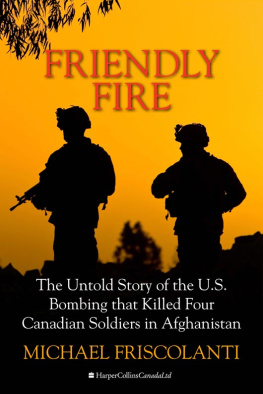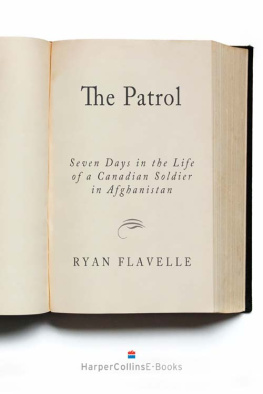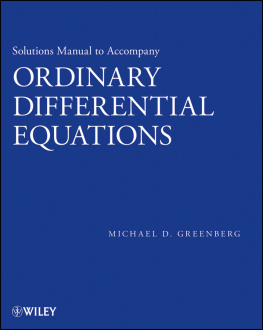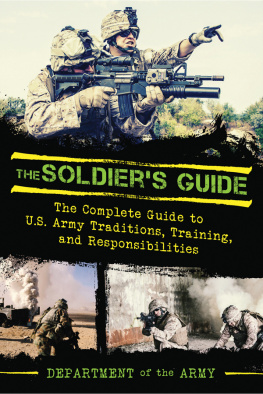Mike Friscolanti - Friendly Fire: The Untold Story of the U.S. Bombing That Killed Four Canadian Soldiers in Afghanistan
Here you can read online Mike Friscolanti - Friendly Fire: The Untold Story of the U.S. Bombing That Killed Four Canadian Soldiers in Afghanistan full text of the book (entire story) in english for free. Download pdf and epub, get meaning, cover and reviews about this ebook. year: 2014, publisher: HarperCollins Canada, genre: Detective and thriller. Description of the work, (preface) as well as reviews are available. Best literature library LitArk.com created for fans of good reading and offers a wide selection of genres:
Romance novel
Science fiction
Adventure
Detective
Science
History
Home and family
Prose
Art
Politics
Computer
Non-fiction
Religion
Business
Children
Humor
Choose a favorite category and find really read worthwhile books. Enjoy immersion in the world of imagination, feel the emotions of the characters or learn something new for yourself, make an fascinating discovery.
- Book:Friendly Fire: The Untold Story of the U.S. Bombing That Killed Four Canadian Soldiers in Afghanistan
- Author:
- Publisher:HarperCollins Canada
- Genre:
- Year:2014
- Rating:4 / 5
- Favourites:Add to favourites
- Your mark:
Friendly Fire: The Untold Story of the U.S. Bombing That Killed Four Canadian Soldiers in Afghanistan: summary, description and annotation
We offer to read an annotation, description, summary or preface (depends on what the author of the book "Friendly Fire: The Untold Story of the U.S. Bombing That Killed Four Canadian Soldiers in Afghanistan" wrote himself). If you haven't found the necessary information about the book — write in the comments, we will try to find it.
The text below is an excerpt from Friendly Fire.
It is the early morning of April 18, 2002, following the mayhem of a bomb attack on a section of the Princess Patricias Canadian Light Infantry, outside Kandahar, Afghanistan. The Edmonton-based soldiers were conducting a live-fire training exercise at a former al-Qaeda compound when a U.S. fighter pilot mistook them for the enemy. At Tarnak Farm, A Company begins to board the trucks that will take them back to camp. Out of habit , Lt. Luft conducts a roll call of his platoon. 1 Section. Here. 2 Section. Here 3 Section. Alastair stops himself. There is no 3 section. Except for Cpl. Chris Oliver, the troops are either dead or in the medical tent. The guys left behind watch the trucks drive away. For nearly two hours, everyone has been operating on instinct, on training. but now, all the noise, all the adrenaline, are gone. Its suddenly real. Four men are dead. Outside the ambulance, Wilson and Speirs are chain-smoking Korea 88s, replaying the chaos and confusion of those first few minutes. Could we have been faster? Did we save everyone who could be saved? There will always be doubts... By now, there is little doubt about what happened. Some of the guys heard the jet. Some even saw it. They dont know the details yet. Nobody really does. But the Taliban doesnt have any F-16s. That was a U.S. bomb. How could this happen to us? Sgt. Favasoli asks Cpl. Filis. How could this happen to coalition forces?
Mike Friscolanti: author's other books
Who wrote Friendly Fire: The Untold Story of the U.S. Bombing That Killed Four Canadian Soldiers in Afghanistan? Find out the surname, the name of the author of the book and a list of all author's works by series.










